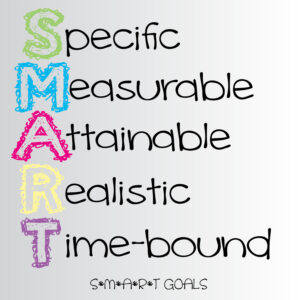Usually, around this time of year, you hear a lot of talk about goal-setting…and there is a lot of information out there, both pro and con about setting goals for a new year. What we hear most is that goals that are created in the form of “New Year’s resolutions” (such as “make more money”) are generally not very effective and get lost in the mire of life and business by about the third week of January (i.e., right about now!).
So, how can you as a business owner set goals that stick and that can keep your team enrolled in your vision? First, let’s stop calling them goals and give them a little more power.
Let’s reframe our conversation to strategic objectives and planning. What’s the difference, you may ask? In most cases it can be the difference between setting an objective and actually reaching your objective in your business. That’s a pretty vital distinction, wouldn’t you agree?
So, what is the actual difference between creating a strategic objective and simply setting a goal?
Business consultants, business coaches and entrepreneurial textbooks discuss strategic objectives using an acronym called SMART. It stands for Specific, Measurable, Achievable (or “Actionable”), Realistic and Time-Bound.
Let’s break that down a bit further:
- Specific – Every strategic objective in your business has to be specific. What, EXACTLY, are you intending to create as an outcome? For example, instead of simply stating “we need to generate more sales” you would use a specific target such as “generate $100,000 in new revenue” or “increase sales by 15%”.
- Measurable – Your business strategic objective must be measurable or you cannot possibly know whether you have achieved it. Using our previous example to “increase sales by 15%” you would need to know where you are now in your sales and then increase that number by 15% to know your metric target. You can refer to your cash flow budget to get your starting numbers.
- Attainable (or Actionable) – The A in SMART may be referred to as either “achievable” or “actionable” and there is a definite distinction here. Attainable is whether the objective has a reasonable expectation of being met. Actionable is a different concept entirely and implies that it is within your organization’s control to take specific actions that will lead to achieving the end objective. Typically, one “A” or another will work well in your strategic plan.
- Realistic – Your strategic objectives must also be realistic. It’s great to set the bar high…and you should…but at the same time creating a strategic objective that is too far out of reach ends in frustration and can create a drop in morale on your team. Experiment to find just the right fit.
- Time Bound – It is absolutely ESSENTIAL that there be a time deadline attached with your strategic objectives. This is the “juice” that drives its achievement and it directly connects with the measurability factor. In keeping with our theme, by adding a time deadline to the goal, it might now read like this: “We will increase sales by 15% to achieve $100,000 in new revenue by June 30 of this year.”
With your SMART objectives in place, you now have a formula that can enroll everyone on your team who may be part of meeting the strategic objectives in your business. Use the SMART strategy when you set all your objectives and you will find that the objectives you set for your business are not only more clear, but more achievable. Try this in your business…this strategy works!


